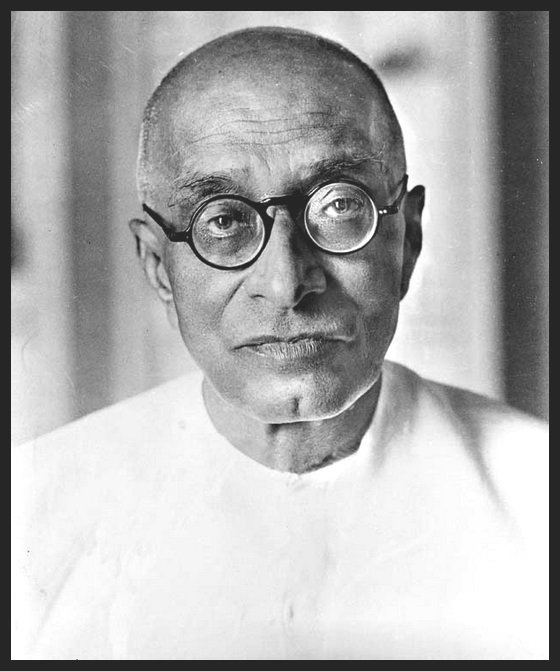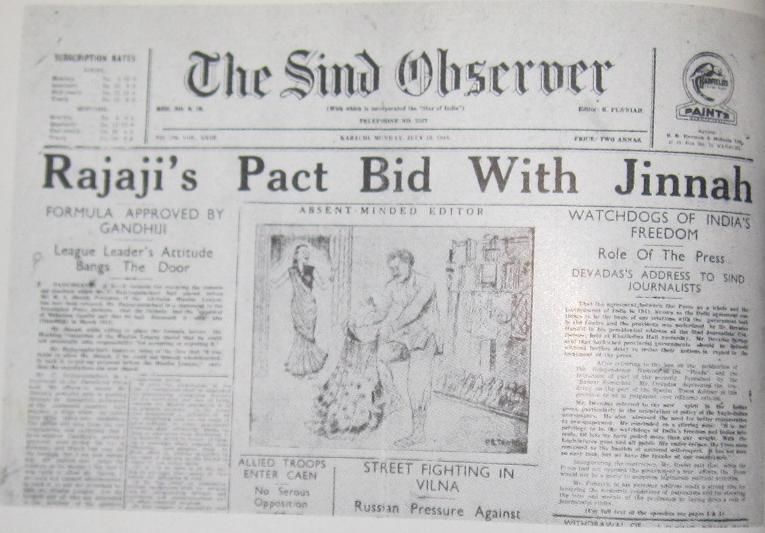The impact of World War II was not only in those countries who were a part of this war. But this world war also propelled the Independence moment in the Indian subcontinent. British were using Indian peoples in battalions which were being installed in World War. Also, other resources were frequently used by the British which was angering the Indian peoples and making the governance of the British quite cumbersome.
By the opening months of 1944, German forces had started retreating & World War II had entered into the last phase. It was quite clear that the end of the war was just a matter of time as a result of this, the political environment in India had also started to change.
British Government indicated that it was standing by the provisions of the Cripps plan but the political differences prevailing between Congress and the Muslim League were coming in the way of constitutional advancement in India.
Apprehensive that government could use the differences between Congress and Muslim League to deny the transfer of power into Indian hands. Leaders like Mahatma Gandhi started taking initiatives to hammer out different prevailing between Congress & Muslim League. Rajagopalachari’s formula and Desai, Liyaqat Ali talks were the steps in the same direction.
C. Rajagopalachari’s Independence Formula (Jan -1944)

It was a plan prepared by C. Rajagopalachari, at the behest of Mahatma Gandhi to hammer out the different prevailing between Congress and the Muslim League. The formula provided that Congress and the Muslim League should work together for the attainment of Independence.
The issue of the partition should be decided through the election in Muslim majority areas after the attainment of Independence. Even in the case of separation of India into two sovereign units. Both units would maintain cooperation in an essential matter such as defense, communication & foreign affairs. This condition would be binding on Congress only in case of transfer of complete responsibility into Indian hands.
Rajagopalachari’s formula was prepared in March 1944. It was discussed for Gujarat & Jammu at Bombay in June 1944. Formula failed to settle the difference between Congress & Muslim League because Jammu demanded that the issue of partition was settling 1st & then only Muslim League will cooperate to the attainment of Independence.
Desai-Liyaqat Ali Talks (Jan- 1945)
Bhulabhai Desai was the leader of Congress in Central Legislative Assembly and Liyaqat Ali Khan was deputy leader of the Muslim League in the same house. Both were friends. They held private talks to find ways to settle different prevailing between Congress & the Muslim League with the blessing of Gandhiji.
Both of these leaders agreed that Congress & Muslim League should have equal representation in the proposed interim government & both parties should work together for the attainment of Independent. These talks’ fiats to find solutions to India’s political problem because when Jammu got to know about these talks, he immediately repatriated these talks.
Wavell Plan in Simla Conference

The failures of initiatives taken by Congress in setting the difference between Congress & the Muslim League compelled Governor-General Lord Wavell to formulate plant himself so that a solution could be found for Indian’s political problem. He formulated a plan in Jan 1945. He went to London in March 1945 to discuss this plan and the plan was revealed in June 1945.
The Wavell plant provided that the Governor-General’s executive council would be converted into an interim Government. All its members except the Governor-General himself and commander in Chief would be Indians. Caste Hindus Upper (Upper Caste Hindus) & the Muslims will have equal representation in the proposed interim government.

The Veto Power of Governor-General will not be abolished but it will not be used except in special circumstances. A constitutional assembly would be elected by using the formula suggested by the Cripps plan. This plan was discussed at Simla (Simla Conference) during June – July 1945 but the conference fiats because Muslim members in the proposed interim government shall be nominees of the Muslim League. This demand of Jammu was unacceptable to Congress.
Significance of the Failure of Simla Conference
Failure of Simla Conference was the development of great significance in India’s political history because the league could exercise Veto successfully at this conference. League wasn’t only a Muslim party nor it the only party representing Muslims in India. Instead of pressuring Jammu into giving up his impractical demand, Governor-General Lord Wavell announced the failure of the Shimla Conference. This failure was a big success of the Muslim League it was a great failure for the Indian National struggle.
The failure of the Shimla Conference emboldened Muslim League greatly. Its politics became much more radical. The league could claim to be the only representative of Muslims. This newly formed confidence played important role in the remarkable success of the Muslim League in the elections of 1945 (winters).
The league won 15% of total Muslim Votes. It could win the majority in Bengal and Sindh. Its affiliate party formed government in Punjab. This growing strength of the Muslim League was quietly visible that’s why Puran Chand Joshi commented that to glorify the strength of Congress & to denies Muslim League is to be blind.
High lightened the Simla Conference V.P. Menon commented that Shimla Conference afforded the last opportunity to the force of nationalism to fight real guard action to preserve the integrity of the country and when the battle was last, the waves of communalism quickly engulfed it.

